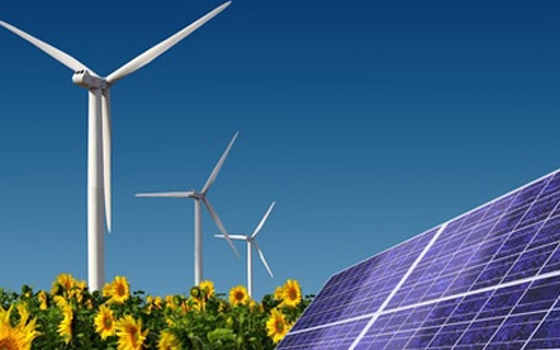Qatar, with one of the highest solar irradiation rates in the world, has plans to utilize the sun's rays as a sustainable energy source over the next few years. With every square kilometer of land in Qatar receiving yearly solar energy equivalent to 1.5 million barrels of crude oil, Qatar is geographically well-positioned to significantly benefit from solar energy.
Qatar’s Minister of Economy and Energy, Mohammed bin Saleh Al Sada, recently announced that Qatar would launch pilot projects in the solar sector as part of a 200MW solar program announced last year. The initial phase will see small-scale plants generating 5MW-10MW each, installed on under-utilized land. Last year the cost of this phase was estimated at $30 million. Phase two will involve assessment of the initial sites, with a view to bringing in private investment to increase solar capacity.
Actually, Qatar aims to generate 20% of its energy from renewables by 2024, and to have 1,800MW of installed green capacity by 2020. These are ambitious targets given the current power generation mix, but not an unobtainable one, thanks to the financial resources at its disposal and its year-round sun, which makes it well suited for solar development.
One driving force behind renewables development is Qatar Solar Technologies (QSTec), a venture between Qatar Foundation, a semi-private non-governmental organization backed by the Royal family; Germany’s SolarWorld; and the government-owned Qatar Development Bank.
In a landmark development in the country's pursuit of alternative energy sources, QSTec recently demonstrated the first of 136 solar modules that will be used to power Qatar's Passivhaus-Baytna project.
When installed, the SolarWorld-QSTec photovoltaic mono-crystalline silicon panels will provide all of Passivhaus' electricity requirements, with excess power being fed back into the power grid of Qatar General Water and Power Corporation (Kahramaa).
The QSTec-supplied high efficiency panels have an installed power of 34 kilowatt peak and will produce around 58,000 kilowatt hours of electricity per year. Using this solar power system to exclusively supply Barwa's Passivhaus will help avoid approximately 35 metric tons of CO2 emissions per year.
International involvement
A number of international companies are also involved in research and development in the solar sector in Qatar. US energy giant Chevron is investing $10 million in the Centre for Sustainable Energy Efficiency (CSEE) at Qatar Science & Technology Park, with another $10 million coming from local clean energy firm GreenGulf.
The CSEE was inaugurated in March 2011 and aims to develop solar technology that is suited to Qatar’s climate and the specific needs of its energy users. One of the issues that Chevron aims to address is building solar panels that can perform in the hot and dusty Gulf environment. With very little rain, panels can get clogged with sand and dust, and thus absorb less sunlight. According to Chevron, their effectiveness can be reduced by as much as 40% after six months. Photovoltaic also operate less effectively in high temperatures.
Other international firms investing in solar research in Qatar include General Electric, Shell and ConocoPhillips, while the Doha campus of Texas A&M University has a project working on using solar energy to break down natural gas into carbon and hydrogen for industrial uses.
Sustainability guidelines
On the other hand, Qatar’s Ministry of Environment, together with several institutions like the Qatar Green Building Council (QGBC) and Ashghal, are discussing the mandatory requirements for green construction such as energy and water saving measures, reduction of solid waste and wastewater and improvement of indoor environment to safeguard public health. Suggestions by the public and private sectors will be taken into consideration before finalizing the guideline.
Sustainable Standards that are set for environment-friendly buildings which reduce general consumption of water and energy, reduce carbon dioxide emissions and enhance recycling are set to be released in two phases — voluntary standards and mandatory standards — which will be implemented when new buildings are built.
Additionally, gulf and international standards are taken into consideration while setting up the Sustainable Standards. These guidelines aim at ensuring public health and safety, especially in avoiding accidents. Preserving Arab and Islamic identity in architectural designs of the buildings will also be taken into consideration. The final document of the Sustainable Standards is expected to be released by end of this year.
ifpinfo
3 April






















































